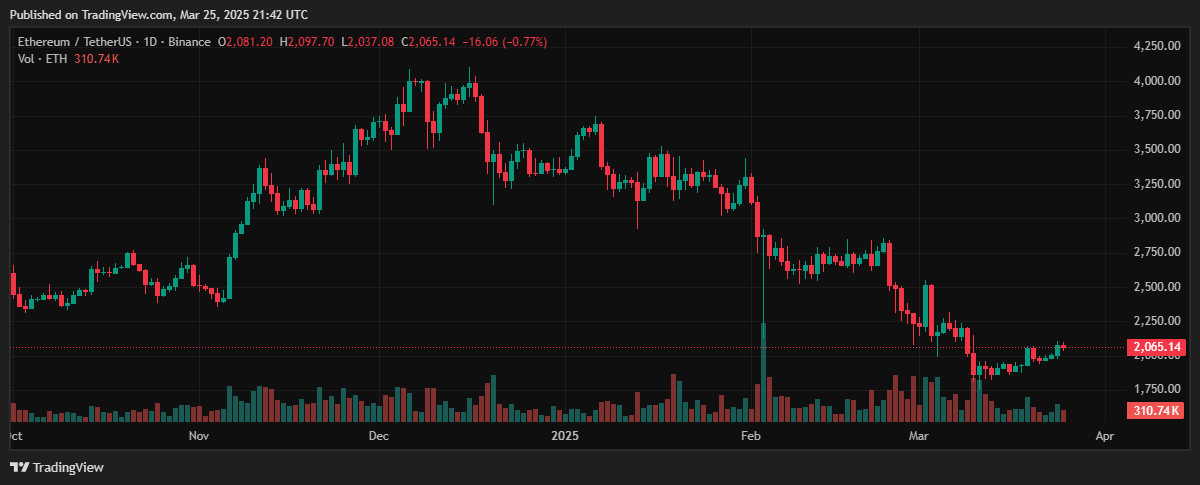Recently, Ethereum (ETH) has traded at $2,073.84, showing a modest 0.79% decline over the last 24 hours. This decline is usually modest, but is immediately following a 26.02% decrease over the past 30 days. The long-term decline suggests that despite the period of recovery, ETH is subject to sustained sales pressure amid wider market uncertainty. This difference between short-term volatility and long-term trends is typical in the volatile crypto market where investors’ sentiments can swing quickly based on external factors such as regulatory news, macroeconomic events, and technical updates.
Ethereum price analysis

The RSI is currently close to 50 and shows a neutral stance. This balanced reading suggests that ETH is not over-bought or sold. However, if the RSI exceeds 60, it indicates that bullish momentum increases. Drops below 40 could indicate more sales. In the short time frame, MACD shows early signs of bullish convergence, but on daily charts the indicators remain mixed.
The daily MACD bullish crossovers make a strong confirmation that the upward momentum is back. Volume is an important component of any technical analysis. Recent trading volumes with a 0.79% decline in ETH help to ensure that price movements are supported by aggressive market participation. For example, an increase in volume during an upward breakout is an indicator of strong bullishness.
The main support level is around $2,000-$2,020. This zone has historically served as a floor during its revision. If ETH exceeds this support, it can provide a stable base for recovery. The immediate resistance is between $2,120 and $2,150. A breakthrough that outweighs this resistance in particular could pave the way for bullish moves towards targets in the $2,200-2,400 range in the short term.
Ethereum price forecast
Ethereum could go beyond the $2,120-$2,150 resistance zone with strong volumes. In this scenario, ETH could ralise to target levels between $2,200 and $2,400. Positive news such as positive regulations updates, increased institutional adoption, or successful network upgrades (e.g., enhancements to Ethereum 2.0 and improved gas rate efficiency) can serve as catalysts.
Additionally, new positive sentiments from influential people and social media can also raise interest in purchasing. Over 60 sustained RSIs, along with bullish MACD crossovers on daily charts, confirm bullish trends, leading to higher price targets. Ethereum may continue trading within a narrow range of $2,000 to $2,150, according to Ethereum price forecasts. This integration suggests that buyers and sellers are in relative equilibrium.
At this stage, ETH could have mild fluctuations, approaching its current price of $2,073.84. This integration period serves as a pre-accumulation of the next important movement, allowing the market to digest recent volatility. Integration can provide a stable environment for long-term investors, and if a clear catalyst appears, it can be a breakout.
If ETH fails to maintain support between $2,000 and $2,020, the bearish momentum could increase and decrease even further. In this bearish scenario, Ethereum could drop to the $1,900-$1,950 or even lower range if significant sales pressure continues. A fall in RSI below 40 and bearish MACD crossover on the daily charts indicates that sales pressure is dominant. Increases in sales activity could potentially check bearish outlook and push prices down, particularly when accompanied by a decline in trading volume.
Investment risk consideration
Investing in Ethereum poses inherent risks due to its unstable nature and the complex dynamics of the cryptocurrency market. It is essential that investors conduct thorough research, stay behind in the development of the market, consult with a financial advisor and effectively manage these risks before making investment decisions.


